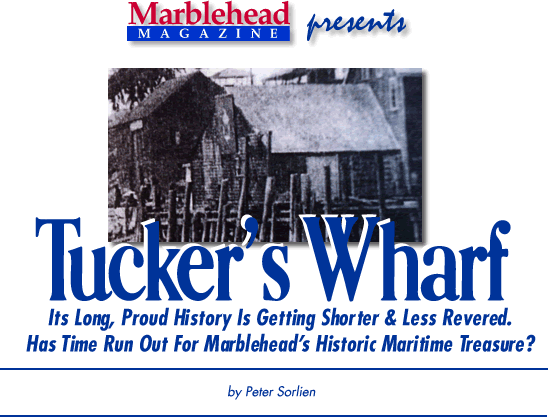|
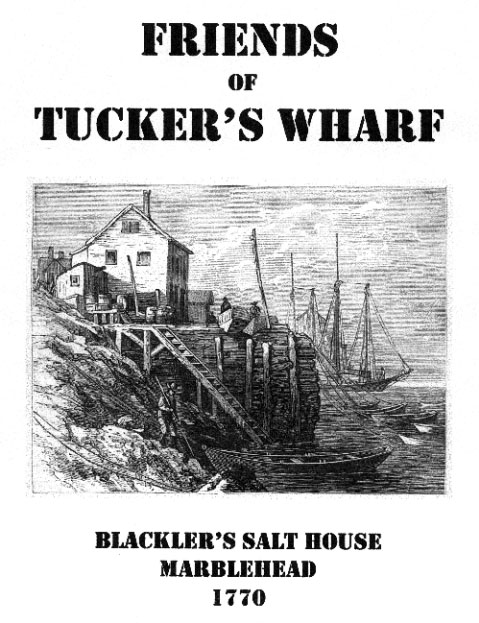 They
say, "You can't judge a book by its cover." In the case of
Marblehead's historic maritime treasure, Blackler's Salt Shed, you definitely
can't judge a building by its current state of shameful disrepair and
neglect. They
say, "You can't judge a book by its cover." In the case of
Marblehead's historic maritime treasure, Blackler's Salt Shed, you definitely
can't judge a building by its current state of shameful disrepair and
neglect.
In Marblehead, many of the great stories of history are found not merely
in books. Here history is still standing in the streets and along the
harbor's edge. Our old buildings with their drooping roof lines, crammed
together along narrow streets, teetering on the water's edge, and towering
majestically over the Town, all speak volumes about the lives, aspirations
and accomplishments of the great Marblehead tradition and of the caring
and involved people who built this community in the old days.
Central to the Town's legend is Marblehead's contribution to the American
revolution and the great courage and sacrifice it took to lead the building
of this great nation. The fact that George Washington came twice to
Marblehead to thank the Town for its revolutionary service, echoes through
history leaving no doubt of Marblehead's pivotal role. And yet, nearing
demolition, now all but abandoned, stands a symbol from that very era
when Marbleheaders reached for the stars and boldly led a grateful nation
to independence and freedom. Now the handiwork of William Blacker, who
rowed Washington across the Delaware himself, in a boat built with the
same hands, quietly inclines, almost metaphorically, towards a quiet
death by the sea. Blackler's salt shed, an admittedly modest, and run-down
building has had the Town twice now turn its back on its restoration.
Like an old library book whose dog-eared cover was replaced with a generic
institutional binding (and even that is worn and warped now) there are
still hidden within all the wonders of the original...waiting for the
right hands to pick it up again. The Town voted for a new trash truck
but not to save Blackler's salt shed. But the little building that could
continues to inspire a small group of crusaders, who won't say die.
The struggle of the Friends of Tucker's Wharf, like the revolutionary
whose building they want to save, is a struggle against the odds, against
the apathy of many, and against the special interests that would sweep
history aside in favor of simple utility and cost effectiveness. And,
just like the history of Marblehead's revolutionaries, this story still
commands attention and there is still time to save a happy ending.
Marblehead's own story begins with fishing and quickly includes Blackler's
Salt Shed. There is no mistaking that simple truth. It was, after all,
the abundant cod that drew Europeans to New England, beginning probably
in the sixteenth century. They came in the spring, fished through the
summer, and took their catch home in the fall. To keep the fish from
spoiling, they removed the head and internal organs, rubbed them with
salt, and flaked them in the sun to dry. The bare rocks on the shore
of Marblehead were a natural place to accomplish this, away from the
eternal rocking of their small, but seaworthy boats.
The Salt Shed's story begins with William Blackler and his descendant's.
Blacker was a Marblehead fisherman whose date of birth, even the date
he came here from England's Channel Islands is not exactly known. He
was among those hardy souls who stayed in Marblehead through the winter,
after the fleet returned to Europe. He married the daughter of another
fisherman, John Codner, and they had five children, one of them also
named William. When Joan (or Johann or Jane) Codner Blackler died in
1701, their children inherited her father's land on the Great Harbor
next to Bartoll's Head (now Crocker Park).
The second William Blackler married Mary Rowles on December 18, 1701,
in Salem. Their son William III was baptized on August 27, 1704, and
he also ultimately became a fisherman. His wife Sarah bore five children,
of whom the second was named William and baptized on May 18,1740.
By this time, Marblehead's hardy fisherman had grown tired of the low
prices they were paid for their hard-won catches. Sometimes, England
wouldn't even buy their fish because of mismanagement by the Royal monopolies.
The fish brokers of other countries were not so constrained, and so
without official approval, some ships filled with Marblehead fish were
forced to go to France and Spain. There was an eager market for salt
cod among other English colonies too, particularly the islands whose
large populations of slaves growing sugar could not be sustained with
local produce. The fourth William Blackler may have begun in fishing
boats, but while still a young man he commanded much larger ships.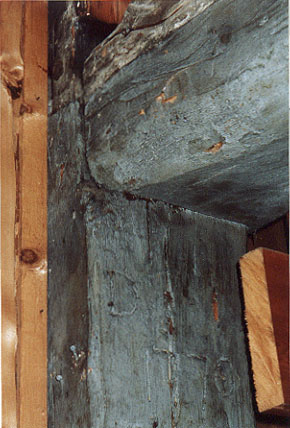
In an economy with a chronic shortage of money, it was common for Marblehead
captains to be paid with a share in the cargo. If the captains we shrewd
traders, they could make far more for themselves and the other owners
across the Atlantic. He could amass capital, and the entrepreneurial
William Blackler soon took shares in ships commanded by other men as
well and on the land he had inherited, he built several warehouses to
hold the return cargoes.
And, as you might have guessed by now, one of William Blackler's warehouses
is still standing: the one he built directly on the waterfront. It was
very sturdily built, to say the least, of 12" x 16" timbers mortised
together. It was built not only to withstand the ocean storms that swept
down the harbor, but also for the great weight of cargoes which filled
it in its heyday. The building is known to historians as Captain Blackler's
Salt House because one of the most precious commodities he traded was
salt. Without salt, the fish could not be preserved, and without preserving
the first for the ocean crossing, there would be no trade. Salt must
be kept dry, and so probably was stored on the second floor. A keg of
salt is very heavy and tons and tons of kegs on the second floor meant
strong rafters and framing: strong enough to last more than 230 years,
and survive the toughest and most violent storms the Atlantic Ocean
can serve up. But, will the handiwork of William Blacker prove strong
enough to withstands the storm of apathy and the sure, swift hands of
expediency?
The salt house is perched on a shallow outcropping of low granite that
lines the Town-side shore near the strategic middle of Marblehead Harbor.
It is nestled on the granite at the rear, and on the stubs of ship's
masts in front. A thick stone seawall was built around it, and the whole
area was filled in to make the building more stable, and to allow the
largest ships to tie up right next to it. The men who built the salt
shed took such pride in their work that they carved the date they finished
the building in one of the huge posts: "1770." Two hundred and thirty
years later, their handiwork and craftsmanship is still intact: 60 posts
and beams frame the original construction as solidly jointed together
today as they ever were. Even the ship's masts are still there underneath
it, secure and solid.
As the source of salt, Blackler's warehouse must have been the figurative
as well as literal center of the harbor. Before heading out, every fishing
boat would have to stop there. The oldest pictures and drawings, from
the 1850's, show all manner of fishing boats from dories to schooners,
gathered around the historic little building. As another historic note:
he first recorded use of the word "dory" is found in the account book
of a Marblehead boat builder, and Marbleheaders pioneered the first
use of these "dories" on schooners. The large schooners would
carry the dories to the fishing banks, and once there the fishermen
would fan out in the smaller boats, dories, Ñ on the open ocean. It
was hard and dangerous work. And all Marblehead fishing voyages started
down at Blackler's Salt Shed, or at the very least stopping at the shed
was as routine as anything could have been in the days when Marblehead
was a true seafaring coastal New England town with most, if not all,
of its able-bodied men at sea.
Old pictures also show a special, some say, "curious," door
on the second floor of Captain Blackler's Salt House. It resembles the
ordinary door on the first floor, but it is offset, and there are no
stairs to reach it. The kegs of salt probably were hoisted out of that
door, into the schooner tied up below. The windows were placed the  same
way Ñ wherever light was needed. The rules of symmetry were strictly
followed in the grand old houses of Town, but in the salt house, and
around the waterfront, symmetry was cast aside for pure functionality
creating the historic and perhaps, now, "quaint architecture of
the waterfront, so distinctly historic, so absolutely authentic, and
so, well, so Marblehead...that as the years have gone by some of us
have perhaps taken them for granted and so much so that now they seem
derelict and irrelevant. How looks can deceive! same
way Ñ wherever light was needed. The rules of symmetry were strictly
followed in the grand old houses of Town, but in the salt house, and
around the waterfront, symmetry was cast aside for pure functionality
creating the historic and perhaps, now, "quaint architecture of
the waterfront, so distinctly historic, so absolutely authentic, and
so, well, so Marblehead...that as the years have gone by some of us
have perhaps taken them for granted and so much so that now they seem
derelict and irrelevant. How looks can deceive!
The trouble is that the symmetrical and glorious grand houses that are
so treasured and preserved do not give a true impression, a complete
depiction of the Town of those early days. Captain Blackler's other
fishing warehouses are long gone, forgotten. All the other fishing and
trading warehouses of the Town have also disappeared. In fact, Captain
Blackler's salt house is the last 18th century commercial building in
its original place on Marblehead's waterfront, and, unbelievably it
is the last one in all of New England! Now when one looks at Marblehead
from the sea, its early history is barely visible and fading out every
day. Fort Sewall sit stands triumphantly at the mouth of the harbor
but it is closely wrapped on both sides by one building that was moved
to the waterfront and wrapped in porches (now condominiums), and stately
but by comparison detracting modern residences on the other. Fort Sewall
and Blackler's humble little salt shed: they are all that's left of
the old historic structures on the waterfront.
By 1770, New England seamen and traders like William Blackler were impatient
with the management of the colonial 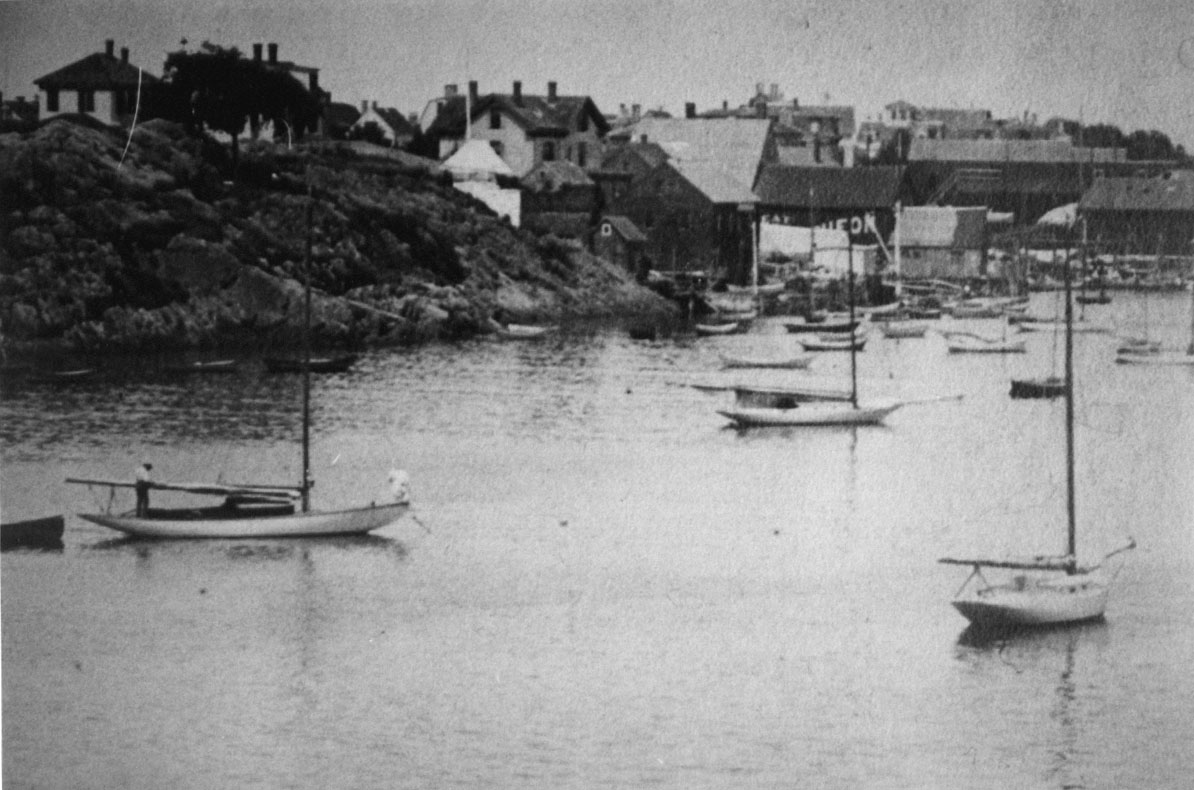 economy
from far away London. English law required that all colonial trade go
through the mother country, and almost every movement of goods was taxed
and taxed again. For most of his life, Blackler had traded directly
with the other colonies, and even with the enemies in England's perpetual
wars for domination of Europe. Marbleheader wily ways of distracting
and dodging the tax collector are the stuff of legends. Suffice it to
say that Marbleheaders developed a thriving independent trade, and a
truly independent frame of mind. Blackler was a member of the Council
that organized an American boycott of English goods. economy
from far away London. English law required that all colonial trade go
through the mother country, and almost every movement of goods was taxed
and taxed again. For most of his life, Blackler had traded directly
with the other colonies, and even with the enemies in England's perpetual
wars for domination of Europe. Marbleheader wily ways of distracting
and dodging the tax collector are the stuff of legends. Suffice it to
say that Marbleheaders developed a thriving independent trade, and a
truly independent frame of mind. Blackler was a member of the Council
that organized an American boycott of English goods.
In 1773, brave and committed William Blackler raised a company of militia,
equipping and training the men at his own expense. Two years later,
he enlisted in the Continental Army and his minutemen became part of
General John Glover's famous regiment. On 22 June 1775, he was commissioned
a Captain of the army, and thus had earned the title on both land and
sea. Earlier that year, a British raiding party had landed on Devereux
Beach with the intent of seizing a cache of arms rumored to be in Salem.
Blackler's men intercepted them, and only adroit and intense negotiation
by Parson Barnard prevented the first shots of the Revolution from being
fired in Marblehead instead of Concord.
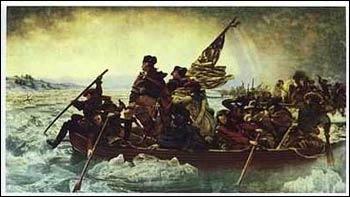 The
role of Glover's Regiment in the Revolutionary War was pure glory, and
a deserving subject for a host of books describing it from every angle.
Most of the action took place near New York. General George Washington
had great need of the seafaring skills of Glover's Mabrlehead men, and
William Blackler was Captain of the boats. When the British trapped
Washington's army on Long Island, the Americans escaped in Blackler's
boats. On Christmas Eve 1776, it was Blackler's boats that ferried the
army across the Delaware River to win the crucial first victory of the
war. General Washington rode in Blackler's own boat. The
role of Glover's Regiment in the Revolutionary War was pure glory, and
a deserving subject for a host of books describing it from every angle.
Most of the action took place near New York. General George Washington
had great need of the seafaring skills of Glover's Mabrlehead men, and
William Blackler was Captain of the boats. When the British trapped
Washington's army on Long Island, the Americans escaped in Blackler's
boats. On Christmas Eve 1776, it was Blackler's boats that ferried the
army across the Delaware River to win the crucial first victory of the
war. General Washington rode in Blackler's own boat.
Marblehead was exhausted by the Revolution. The townspeople gave so
much of their fortunes and so many men were lost or injured that the
town slumped into an economic depression after the country's victory.
The doors of the ocean trade were wide still open, however, and Captain
William Blackler went back to sea again, this time to the sugar plantations
of the Caribbean. It is recorded that on December 27, 1790, he brought
the 98 ton schooner Dolphin into Marblehead laden with sugar, cotton,
coffee, molasses, salt (700 barrels of it) and one cask of rum, all
on his own account. The next time Dolphin landed a similar cargo, on
April 10,1793, it was his son William, V, in command.
Now in his 50's, the William Blacker seems to have turned the sailing
over to his son and concentrated on the trading business. Locally, he
bought fish, beef, rum, cider and lumber for export, and he imported
sugar from Guadeloupe, St. Martin and Martinique, wine from Bordeaux,
iron from Sweden, rope and canvas from Russia, glassware from Italy,
and window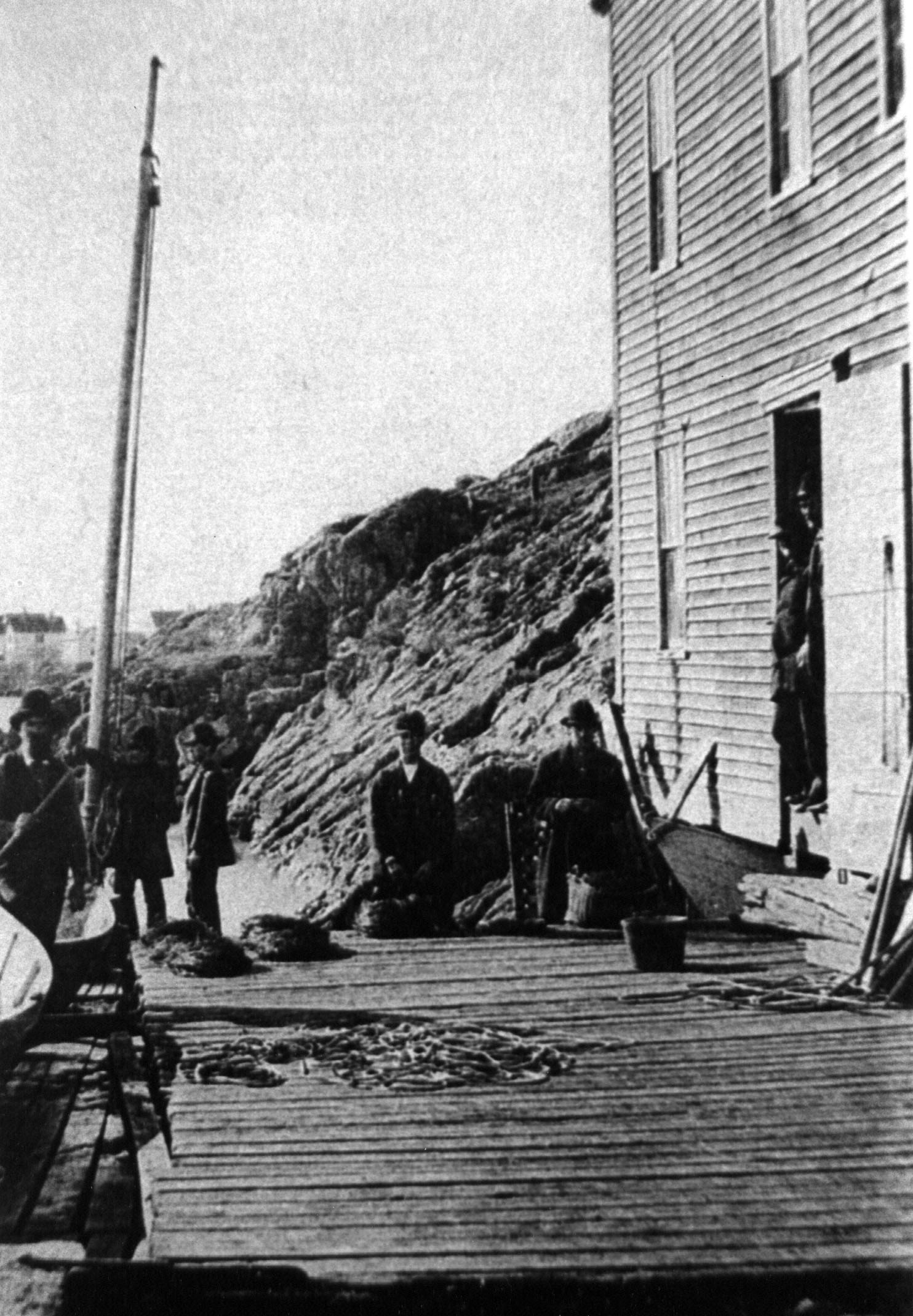 glass, lead, bed ticking, and linen from other continental countries.
He also bought tea, rice and other commodities from his fellow merchants,
and traded them in the Caribbean and Europe. He prospered, and built
a stylish brick mansion that still stands on Pearl Street. After Captain
William Blackler died on June 15, 1818, his son continued the business.
glass, lead, bed ticking, and linen from other continental countries.
He also bought tea, rice and other commodities from his fellow merchants,
and traded them in the Caribbean and Europe. He prospered, and built
a stylish brick mansion that still stands on Pearl Street. After Captain
William Blackler died on June 15, 1818, his son continued the business.
The Great Gale of 1846 decimated the fishing fleet of Marblehead, and
the industry gradually shifted to larger and larger boats, and to the
larger port of Gloucester. International trade also shifted to larger
ships and ports, and Marblehead began to put as much effort into making
shoes as catching fish. The growing urbanization of the rest of the
country, accelerated by the brutal Civil War, opened a new chapter for
Marblehead, and, in turn, a new story for Captain Blackler's Salt House.
Crowded and unsanitary cities became unbearable in the heat of summer,
and those who could afford it, the rich elite, began to seek relief
in small, cooler coastal towns such as Marblehead. The open farmlands
on Marblehead neck slowly were dotted with resort hotels, and then summer
homes. Yachting became a national passion, and for the great sailing
and steam yachts of the late nineteenth century, Marblehead's safe,
deep and picturesque harbor was de rigeur for cruises through
New England waters. Soon, the little town was being called the yachting
capital of America.
Summer visitors needed a means to get from the railroad to the hotels,
and all those yachts needed supplies. The first man to operate a ferry
in Marblehead harbor 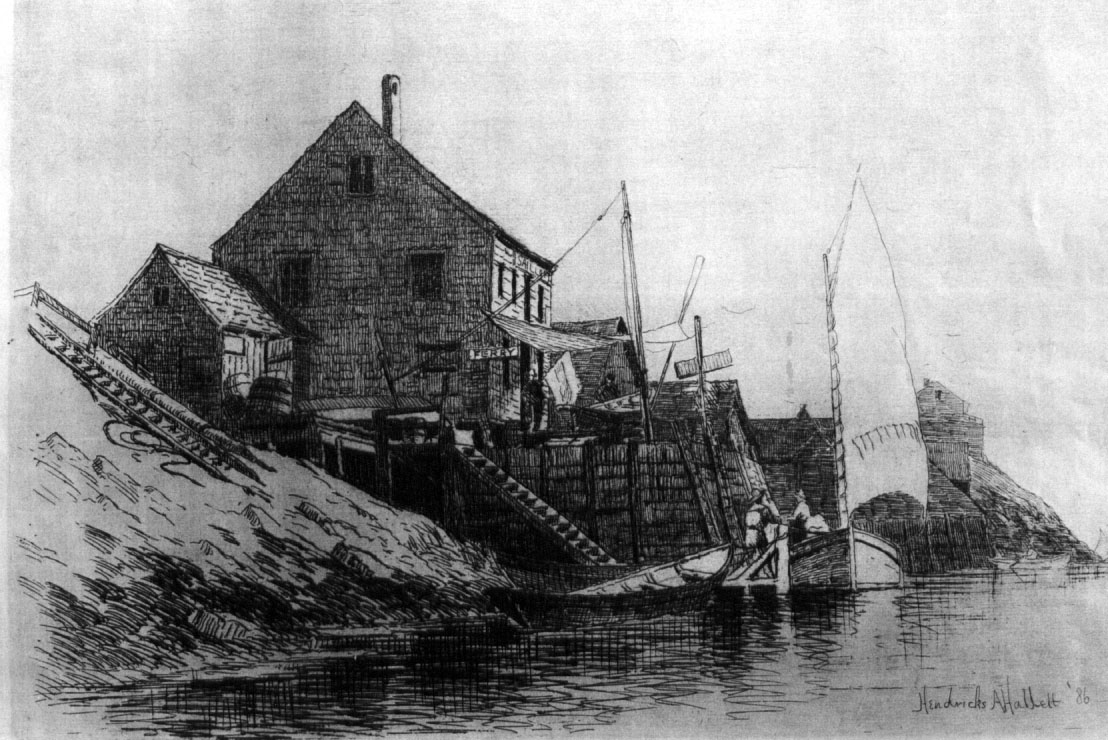 was
Philip B. Tucker, a direct descendant of the Samuel Tucker who won great
fame as a naval commander during and after the Revolution. His ferry
was a large catboat (an open, broad-beamed boat with a single mast and
sail). When needed, he supplemented the catboat with dories in which
people rowed themselves around the harbor. "Phip" Tucker also operated
a chandlery, delivering all sorts of supplies from coal to food to resupply
the large yachts. He called his enterprise the Marblehead Transportation
Company, and his base of operations was, of course, Captain William
Blackler's Salt House. The road to the salt house was named Ferry Lane,
and everyone referred to the ferry landing as Tucker's Wharf. Some of
the greatest names in yachting history and at least one president (Grover
Cleveland) landed at Tucker's Wharf. But in truth, when Marblehead was
the Yachting Capital of America, Blackler's Salt Shed and the Transportation
company, was the center of yachting in Marblehead. was
Philip B. Tucker, a direct descendant of the Samuel Tucker who won great
fame as a naval commander during and after the Revolution. His ferry
was a large catboat (an open, broad-beamed boat with a single mast and
sail). When needed, he supplemented the catboat with dories in which
people rowed themselves around the harbor. "Phip" Tucker also operated
a chandlery, delivering all sorts of supplies from coal to food to resupply
the large yachts. He called his enterprise the Marblehead Transportation
Company, and his base of operations was, of course, Captain William
Blackler's Salt House. The road to the salt house was named Ferry Lane,
and everyone referred to the ferry landing as Tucker's Wharf. Some of
the greatest names in yachting history and at least one president (Grover
Cleveland) landed at Tucker's Wharf. But in truth, when Marblehead was
the Yachting Capital of America, Blackler's Salt Shed and the Transportation
company, was the center of yachting in Marblehead.
A steam ferry named Escort, probably "Phip" Tucker's, was wrecked on
Marblehead Neck on June 8, 1882. It was replaced with two steam launches,
and when Tucker died on October 15, 1900, other men were ready to take
over the business. By this time, the salt house was 130 years old and
in need of renovation. The houses behind it were replaced by the Fountain
Inn, a four-story wooden hotel catering to the growing summer trade,
in 1903.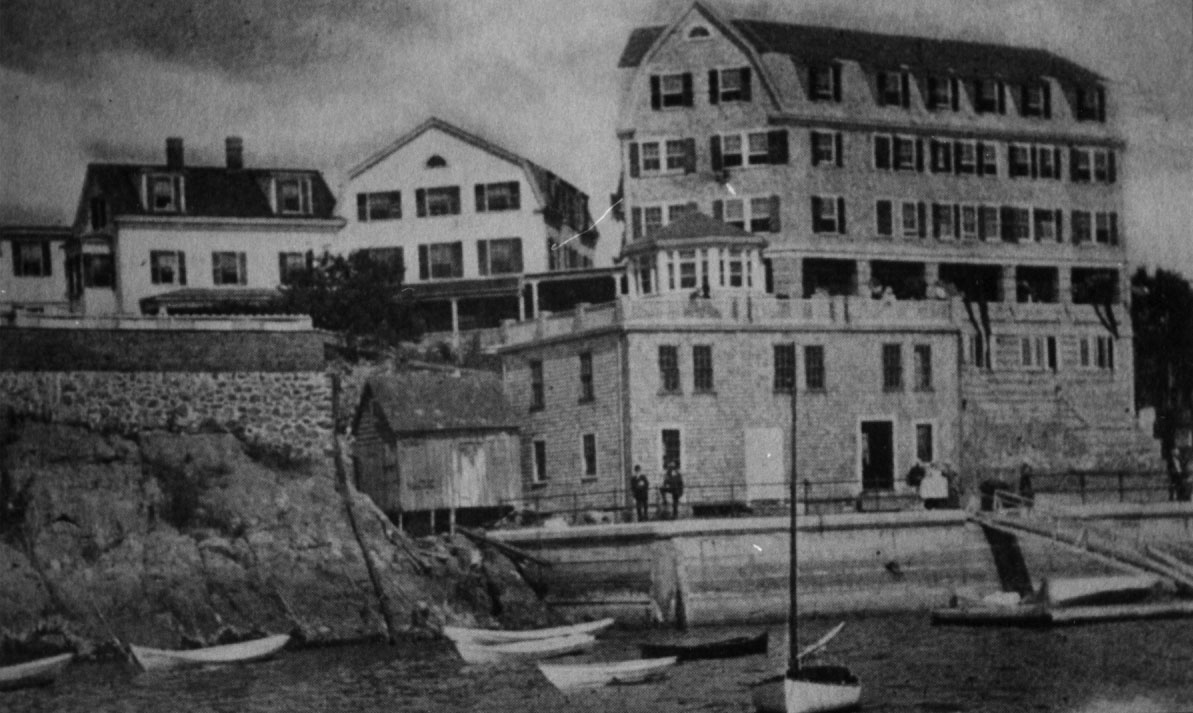 Captain Blackler's Salt House became part of the project, and it was
given a new "cover," including shingles to replace the old hand-split
clapboards, and new doors and windows placed symmetrically. Its gabled
roof was cut off as well, and the new flat roof became a patio where
hotel guests took tea in the afternoon, and danced in the evening. Inside,
it was still the Marblehead Transportation Company, stocked with yacht
and fishing supplies, and used for repairing boat gear. A quaint octagonal
ticket office was built for the ferry service. As internal combustion
engines became more common, gasoline pumps were installed in front of
the old salt house.
Captain Blackler's Salt House became part of the project, and it was
given a new "cover," including shingles to replace the old hand-split
clapboards, and new doors and windows placed symmetrically. Its gabled
roof was cut off as well, and the new flat roof became a patio where
hotel guests took tea in the afternoon, and danced in the evening. Inside,
it was still the Marblehead Transportation Company, stocked with yacht
and fishing supplies, and used for repairing boat gear. A quaint octagonal
ticket office was built for the ferry service. As internal combustion
engines became more common, gasoline pumps were installed in front of
the old salt house.
Yachting boomed after World War II, the Transportation Company prospered,
and a whole generation of Marbleheaders were introduced to the water
in a new way, working on the docks, on the yachts and in the ferries
servicing the harbor as well as fishing. Two large plate glass windows,
the latest thing, were installed on the first floor of the salt house.
By the time of the salt house's bicentennial, it needed a new "cover"
again. In 1973, the shingles, many of the windows (including the plate
glass ones) and the doors were replaced. Underneath, the sills were
replaced, and the lighter new ones reinforced with concrete in the rear
and new pilings. The frame had developed a pronounced lean toward the
water, 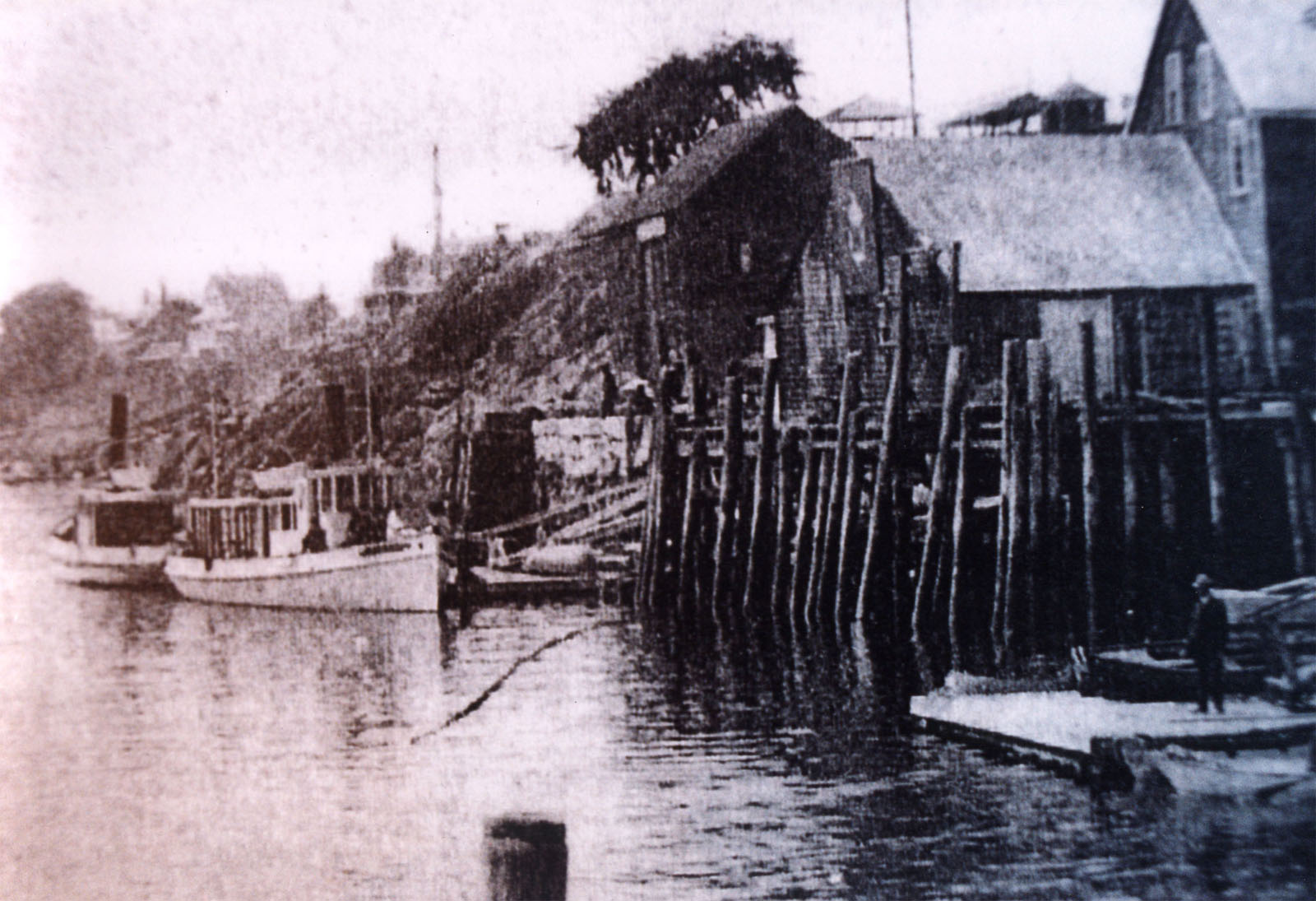 which
was not corrected, and the new door projected four inches from face
of the building. which
was not corrected, and the new door projected four inches from face
of the building.
Then, yachting began to change, and as the proprietors of the Marblehead
Transportation Company aged, the company's fortunes began to fade. Some
of the land on the wharf and the land behind was developed as three
and four-story condominiums, effectively hiding the salt house from
the town. By 1992, the Transportation Company was bankrupt, its principal
asset, a waterfront lot, had been irresponsibly contaminated with oil
and gasoline. The seawall was crumbling and a sad-looking, tired but
historic building was leaning towards the harbor and obscurity.
In order to preserve access to the water for all and keep marine businesses
in Marblehead (the alternative always being more condominiums and construction,
apparently ), the Town actually bought Tucker's Wharf in 1993, just
as it had bought several waterfront boatyards in previous years. The
initial asking price was $732,000.00, and the debate raged at Town Meeting
concerning the price as much as the merits of the land. A price of $695,000.00
was approved by a special Town Meeting that fall, the bond to be paid
from the "enterprise fund" of the Harbors & Waters Board. In addition,
$425,000.00 for the rebuilding of the seawall was appropriated.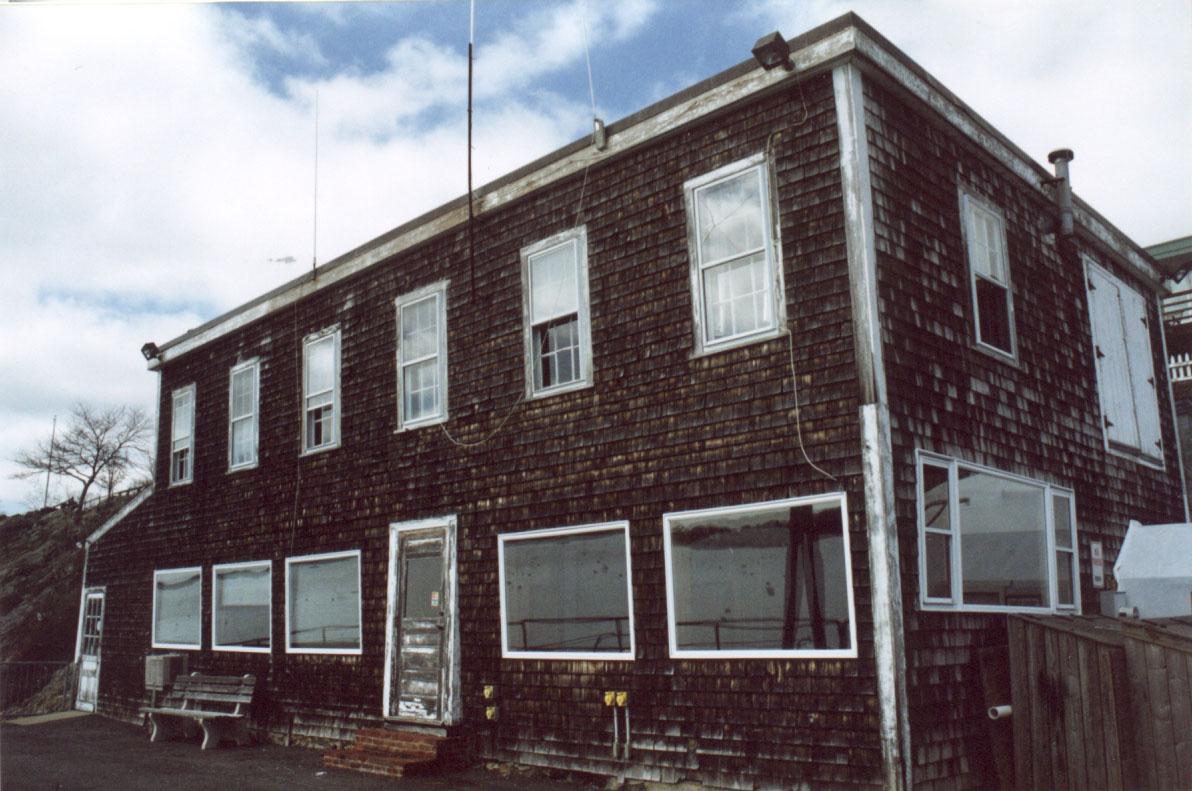
The contamination of the land proved more widespread than thought, but
additional sums for cleanup of $65,900 and $31,000 were approved in
1996 and 1997, making the total cost of repairing the seawall and cleaning
up the land $521,900. To reduce the impact on the Harbors & Waters
Board, the Town applied for a grant from the Massachusetts Highway Department
in 1996. Since Captain Blackler's Salt House had been a ferry terminal,
and therefore an important historic transportation building, it qualified
for a special fund, and the application was rated very high. However,
the Harbors & Waters Board planned to move the Harbormaster's office
a half-mile up the shore into the salt house, and a municipal office
would disqualify the application. The amount of the grant would have
been $762,000.00, enough to pay for the seawall and substantial renovations
of the historic building. It would have saved the balding and save the
Town a lot of money at the same time.
With the seawall finished but having absorbed the rest of the 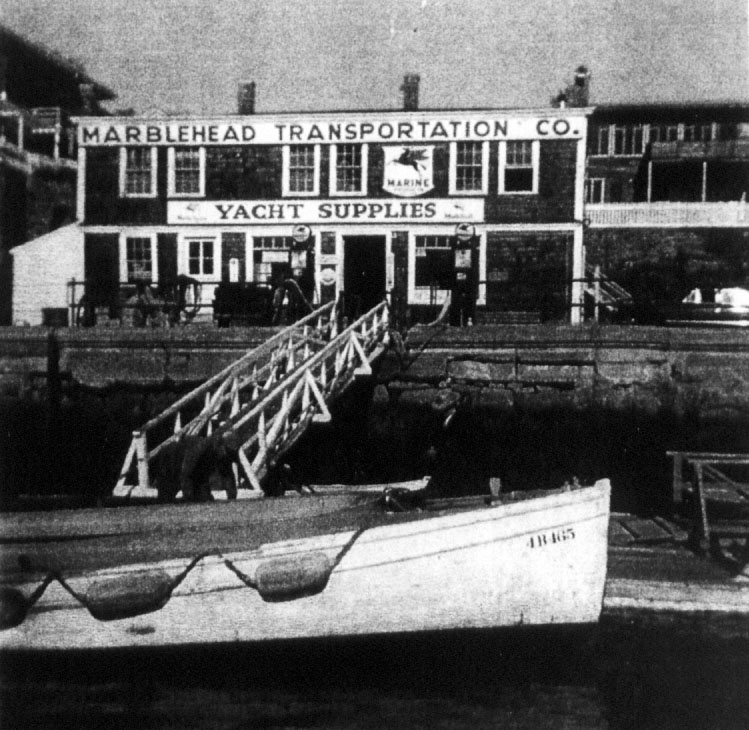 harbor
surplus, the Harbors & Waters Board proposed a public-private partnership
to Town Meeting in 1998. The proposal included tearing down Captain
Blackler's Salt House and allowing a private developer to erect a modern
commercial building on the site. After a specified number of years,
title to the building would be given to the Town, and the developer
would lease the building thereafter. This proposal was hotly debated
and roundly defeated, and requirements were added, to protect the building
in the future, that the Old and Historic District Commission must review
any subsequent plans, and that the future of Tucker's Wharf must be
decided by a vote of Annual Town Meeting. harbor
surplus, the Harbors & Waters Board proposed a public-private partnership
to Town Meeting in 1998. The proposal included tearing down Captain
Blackler's Salt House and allowing a private developer to erect a modern
commercial building on the site. After a specified number of years,
title to the building would be given to the Town, and the developer
would lease the building thereafter. This proposal was hotly debated
and roundly defeated, and requirements were added, to protect the building
in the future, that the Old and Historic District Commission must review
any subsequent plans, and that the future of Tucker's Wharf must be
decided by a vote of Annual Town Meeting.
The Harbors & Waters Board retained an architect to investigate
alternatives to simply demolishing the salt house, and then awarded
a contract valued at $31,000.00 for an architect to draw up the plans
for renovation. In light of estimates prepared from those plans and
the recommendations of the Harbors & Waters Board,, Town Meeting
voted in 1999 to appropriate $450,000 for "remodeling, reconstruction
and extraordinary repairs." To reduce the strain on the Harbors &
Waters Board's budget, the Board of Selectman decided to pay half the
cost of the two $450,000 bonds issued for Tucker's Wharf from general
tax revenues, initially $80,000.00 and declining approximately $2,500.00
every year since.
Before bids could be solicited from contractors, the original architect
died. After some months' delay, bids were submitted ranging from $417,000.00
to $900,000.00, with only the low bidder bothering to actually come
out and inspect the  building.
Explanations for the high bids ranged from lack of interest among contractors
due to the building boom then ongoing , to defects detected in the plans
themselves, such as requiring that new foundations be built without
raising or moving the building, and specifying a steel frame around
the outside without investigating whether the historic timbers could
still do their job. The Harbors & Waters Board voted to not accept
any of the bids. Consequently, the Board had to pay a stiff fine
of $30,000.00 for not using the funds appropriated within the year after
the Town Meeting vote. building.
Explanations for the high bids ranged from lack of interest among contractors
due to the building boom then ongoing , to defects detected in the plans
themselves, such as requiring that new foundations be built without
raising or moving the building, and specifying a steel frame around
the outside without investigating whether the historic timbers could
still do their job. The Harbors & Waters Board voted to not accept
any of the bids. Consequently, the Board had to pay a stiff fine
of $30,000.00 for not using the funds appropriated within the year after
the Town Meeting vote.
By 2001, the Harbors & Waters Board had decided to ask for either
an additional $200,000.00 or permission to demolish the salt house.
Their request was amended on Town Meeting floor, with an overwhelming
vote, to reject and eliminate any possibility of demolition, and then
the $200,000.00 was approved by Town Meeting. The vote to appropriate
was contingent on passing a Town-wide debt-exclusion override approval.
But at the polls, in a very low turnout election, the override request
failed. Captain Blackler's Salt House remained empty and neglected,
but the override failed by only a few votes and Tom Meeting's resolve
was encouraging. With standing water on its roof the most visible threat
to its continued survival, the real threat continued to be the lack
of true commitment on the part of the Town's boards and apathy at the
polls. But there were other positive trends coming.
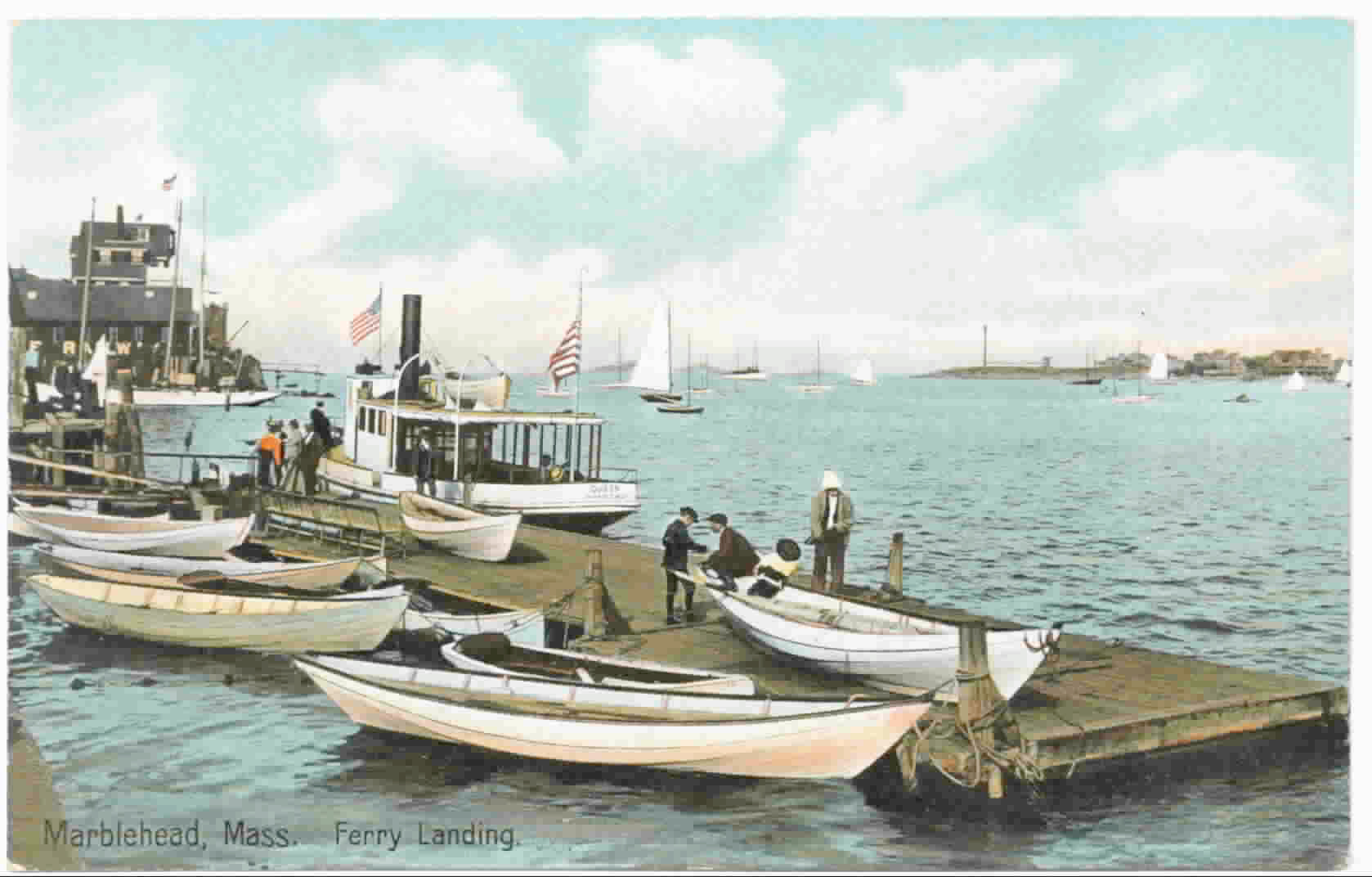 An
informal group of citizens, the Friends of Tucker's Wharf, proposed
rethinking the project and identified simple changes that promised savings
of more than $100,000. The cost of drawing new plans could have been
as much as $25,000.00, however, and the Harbors and Waters Board voted
to not spend any more money until they felt sure of completing the project.
They took the same plans to the next Town Meeting and made a second
request for additional tax money, $250,000.00 this time. Again it passed
at Town Meeting overwhelmingly, but a second article demanding that,
if the override failed, the harbors & Waters Board must spend the
money it had to save the building even if the funds would not go all
the to the completion of the plans. (And there was dispute on this point,
some feeling that it could easily be done with the money in hand and
others doubting it. But it was clear that if the money in hand was spent,
it would advance the exact plans of the Harbors & Waters Board's
architect, if not all the way, a long way.) But, again, the vote failed
in at the polls by a few hundred votes. Now 232 years old, the historic
salt house is still empty, neglected, and yet is sound and strong at
the heart of its construction; the handiwork and craftsmanship of the
revolutionary hero, William Blacker. An
informal group of citizens, the Friends of Tucker's Wharf, proposed
rethinking the project and identified simple changes that promised savings
of more than $100,000. The cost of drawing new plans could have been
as much as $25,000.00, however, and the Harbors and Waters Board voted
to not spend any more money until they felt sure of completing the project.
They took the same plans to the next Town Meeting and made a second
request for additional tax money, $250,000.00 this time. Again it passed
at Town Meeting overwhelmingly, but a second article demanding that,
if the override failed, the harbors & Waters Board must spend the
money it had to save the building even if the funds would not go all
the to the completion of the plans. (And there was dispute on this point,
some feeling that it could easily be done with the money in hand and
others doubting it. But it was clear that if the money in hand was spent,
it would advance the exact plans of the Harbors & Waters Board's
architect, if not all the way, a long way.) But, again, the vote failed
in at the polls by a few hundred votes. Now 232 years old, the historic
salt house is still empty, neglected, and yet is sound and strong at
the heart of its construction; the handiwork and craftsmanship of the
revolutionary hero, William Blacker.
As central to New England history as fishing is, to mount an exhibition
on fishing, local museums and historians have to rely on paintings and
models (many gathered by the great Marblehead collector Russell W. Knight).
Only little bits and pieces of gear and the old fishing artifacts now
survive. New England's greatest fishing museum, Mystic Seaport, has
concentrated on the 1880's for its displays, because, in truth, so little
material older than that has survived.
Captain Blackler's Salt House is an original artifact of 1700s fishing
industry and era in its original location. More than that, it is not
just the substance, but also the spirit of the place that still stands
in here in Marblehead. It is a direct, tangible and vitally important
link to the reason Marblehead and New England were founded and succeeded.
The story of Blackler's Salt Shed is the story of the Revolution, of
summer resorts and yachting, of Marblehead. Its cover looks tattered
now, but it is still Town property,under the care and custody of the
people of Marblehead. And if enough of the Town's people speak up, they
could still cause a little bit of a revolution once again: saving our
history and preserving our unique and irreplaceable heritage. The little
building that could is waiting for you.

To contact The Friends of Tucker's Wharf, email the author
by clicking here.
|
